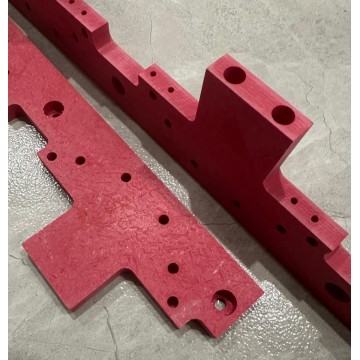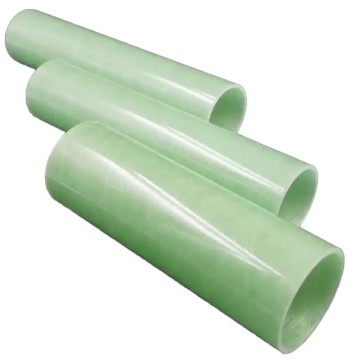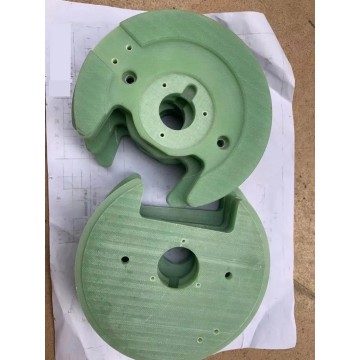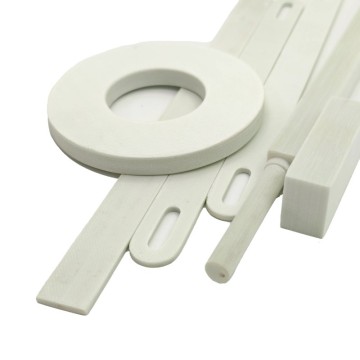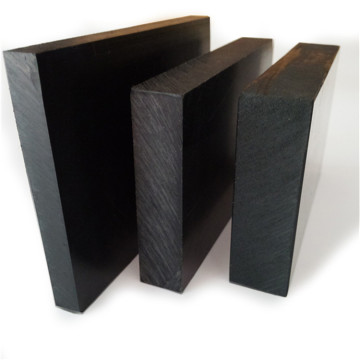
HONYESD®Antistatic POM sheet rod
-
$6.901-99 Kilogram
-
$6.80100-999 Kilogram
-
$6.70≥1000 Kilogram
- Transportation:
- Ocean, Land, Air, Express
- Port:
- Shenzhen, Guangzhou, Hongkong
Your message must be between 20 to 2000 characters
Contact Now| Supply Ability: | Enough |
|---|---|
| Payment Type: | T/T,Paypal |
| Incoterm: | FOB,CFR,CIF,EXW,DDU |
| Certificate: | SGS RoHS Reach ISO9001 |
| Transportation: | Ocean,Land,Air,Express |
| Port: | Shenzhen,Guangzhou,Hongkong |
HONYESD®Antistatic POM sheet rod is a kind of antistatic materials which is made by POM acetal. The working temperature is -40-100℃.ESD POM provided stable and uniform antistatic value. The surface and volume resistivity value is 106-109Ω. And the antistatic value will not changed after machining or surface grinding. This materials is suitable for automatic lathe machining, especially suitable for the manufacture of precision parts.ESD acetal delrin are widely used in Sliding parts: bearing and lining, roller, conveyor chain;Precision mechanical components: gear, cam, coupler, idler roller;Waterproof components: impeller, pump case, gasket;Electrical parts: guide pulley, spring lock;Fixture, lever, handle, knob and other jig materials.
Product features: wear resistance, high rigidity, high hardness, good mechanical properties, good self-lubricating performance, no water absorption
Product shortcomings: not resistant to strong acids, especially mineral acids, not resistant to ultraviolet rays, and not fireproof
Scope of application: sensitive electronic components, mechanical transmission parts, precision mechanical parts, electronic and electrical parts, etc.
Applications: semiconductor test fixtures, semiconductor liquid crystal manufacturing equipment parts, fixtures during wafer processing, sensitive electronic components, hard disk drive components, printed circuit boards, electronic equipment installation, fixtures, rails, trays, gaskets, bushes, Liners, wheel rollers, etc.
Color: beige, black
Specification: Plate: Thickness×Width×Length 6-200mm×620mm×1230mm
Bar: Diameter×Length 6-200mm×1000mm

| HONYESD®Antistatic POM Technical Data Sheet |
|
|
|
| Property item | Testing method | Unit | Testing data |
|
Mechanical properties |
|||
| Density | ASTM D792 | g/cm3 | 1.32 |
|
Tensile strength at yield |
ASTM D638 | Mpa | 79 |
|
Elongation at break |
ASTM D638 | % | 22 |
|
Bending strength |
ASTM 790 | Mpa | 100 |
|
Flexural modulus |
ASTM 790 | Mpa | 2800 |
|
Shore Hardness |
ASTM D2240 | D | 80 |
|
Impact strength |
ASTM D256 | J/M | 50 |
|
Thermal performance |
|||
|
Melting point |
DSC | ℃ | 170 |
|
Heat distortion temperature |
ASTM D648 | ℃ | 120 |
|
Long-term working temperature |
- | ℃ | 100 |
|
Short-term working temperature |
- | ℃ | 130 |
|
Thermal conductivity |
DIN 52612-1 | W/(K-M) | 0.33 |
|
Coefficient of linear expansion |
ASTM D696 | 10-5-1/K | 13 |
|
Electrical properties |
|||
|
Dielectric strength |
ASTM D150 | KV-mm | - |
|
Dielectric loss coefficient |
ASTM D150 | - | - |
|
Volume resistance |
ASTM D257 | Ω.cm |
106-109
|
|
Surface resistance |
ASTM D257 | Ω | 106-109 |
|
Dielectric constant |
ASTM D149 | - | - |
|
Chemical properties |
|||
|
Balanced water absorption |
23℃ 60%RH | % | 0.26 |
|
Acid resistance |
23℃ 60%RH |
|
+ |
|
Alkali resistance |
|
|
+ |
|
Acid and alkali water resistance |
|
|
+ |
|
Chloric acid and alkali resistance |
|
|
0 |
|
Resistant to aromatic compounds |
|
|
+ |
|
Copper resistance |
23℃ 60%RH |
|
+ |
|
Hot water resistance |
23℃ 60%RH |
|
+ |
|
Other properties |
|||
|
Combustibility |
UL 94 |
|
HB |
|
Stickiness |
|
|
+ |
|
toxic free and safe |
EEC 90/128 FDA |
|
+ |
|
Coefficient of friction |
DIN 53375 |
|
- |
|
anti-UV |
- |
|
0 |
Remark:
1."+" Tolerable , “-”Intolerable , "0" Depends on the situation
2. The above data is obtained from raw material test data, which is not completely consistent with the performance of the finished product, and the uniqueness of the data is not guaranteed
Anti-static knowledge
Static electricity is a kind of static charge, which usually refers to the positive and negative charges generated on the surface of the object due to the friction between different objects.
Electrostatic discharge: refers to the transfer of electrostatic charge between objects caused by direct contact or electrostatic induction of objects with different electrostatic potentials, usually refers to the phenomenon of piercing the intermediate medium after the electrostatic field capacity reaches a certain level to discharge.
The necessity of plastic anti-static
Plastics are all high-molecular materials, and their surface resistance or volume resistance is greater than the 1012 power without any treatment, which gives the plastic material good insulation properties. And because of this reason, it is very easy to generate static electricity, because plastic and its products are extremely possible in production, handling, contact, separation, friction, collision, and electromagnetic induction. It is even impossible to avoid these occasions. Brings about the factor of static electricity.
Prevention and treatment of plastic static
1. Add a synthetic permanent antistatic material, which can form a fibrous conductive network inside the polymer, which can export the static charge accumulated on the polymer surface, and permanently eliminate the charge on the surface of various polymers to achieve antistatic performance .
2. Directly use conductive plastic to process its products, which is the origin of conductive plastic (resin) production.
ESD standard :
Conductive : 103 104 105
Anti-static : 106 107 108
High anti-static : 109 1010 1011
Insulation : 1012
Main product




Related Keywords






